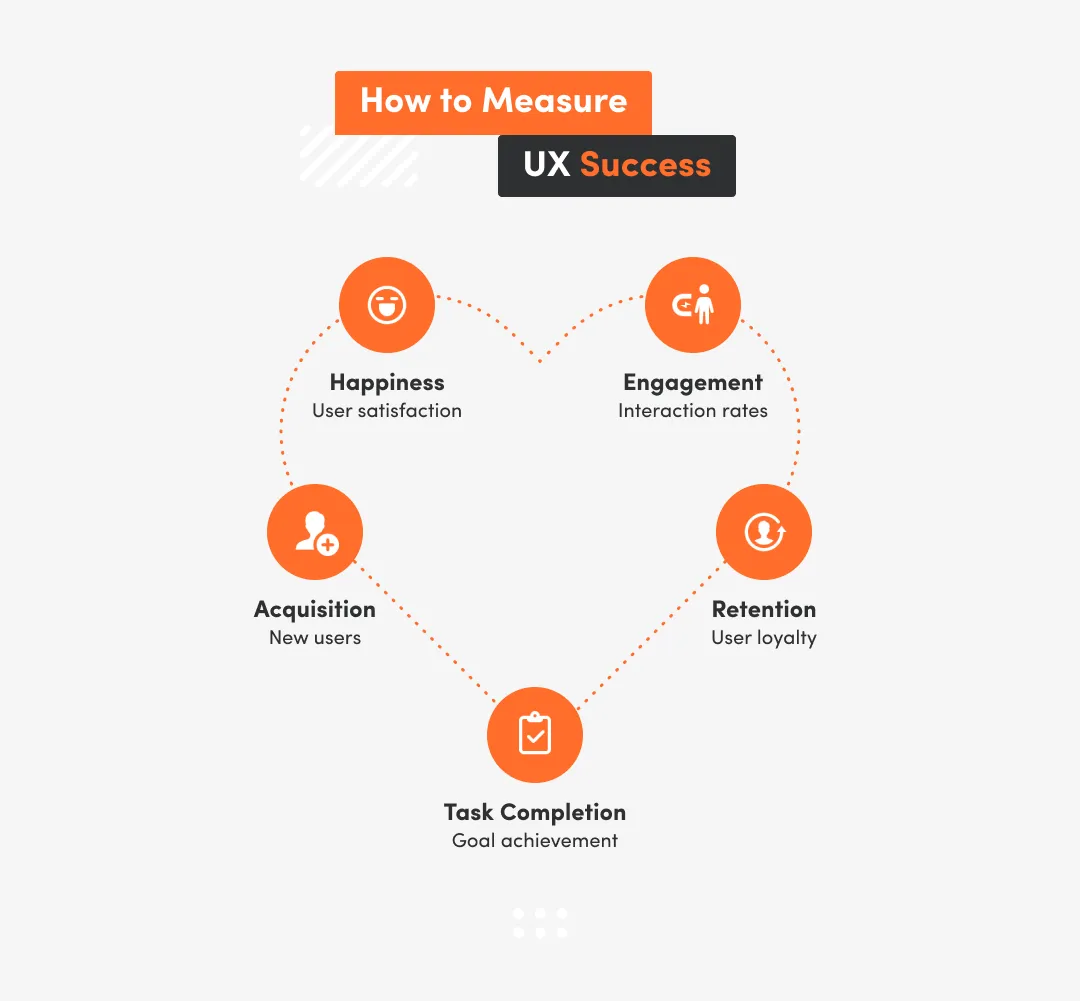User experience consulting is essential in today's product development. It focuses on creating user-friendly and engaging interfaces that improve user satisfaction. As companies prioritize user-centered design, the role of UX consultants has become increasingly important. These professionals use various methods, such as user research, wireframing, and prototyping, to ensure products meet user needs and preferences.
Accessibility and inclusivity in design are crucial. Effective UX design must address diverse user needs, ensuring everyone can use products easily. This focus on inclusivity is vital for creating products that appeal to a wider audience. UX consultants help businesses understand the importance of these elements in their design strategies.
Data-driven design decisions are also becoming more important. By analyzing user behavior and preferences, UX consultants can improve products to enhance usability and engagement.
Collaboration among product managers, UX designers, and developers is essential for effective UX consulting. Open communication between these roles can improve product performance. UX consulting helps businesses align their products with user expectations, leading to better satisfaction and engagement.
Benefits of User Experience Consulting for Your Product

User experience consulting is vital for product success, ensuring it meets user needs and expectations. As companies focus more on user-centered design, the benefits of working with UX consultants become clear. These experts bring valuable knowledge and methods that can significantly improve product usability and satisfaction.
One major benefit of UX consulting is the emphasis on creating intuitive and engaging interfaces. This not only boosts user satisfaction but also increases engagement with the product. By using data-driven design decisions, UX consultants can refine user experiences based on real user behavior and feedback, ensuring the product evolves with user needs.
UX consulting highlights the importance of accessibility and inclusivity in design. UX consultants help businesses create products that everyone can use, leading to a broader market reach and increased customer loyalty.
The UX consulting process typically involves key steps like:
- user research,
- wireframing,
- and prototyping.
These methods are crucial for understanding user needs and preferences. By conducting thorough user research, consultants can identify pain points and areas for improvement, significantly impacting the product's success. This iterative process ensures the final product is functional and enjoyable to use.
Conducting Effective User Research

Conducting effective user research involves understanding users' needs, preferences, and behaviours to create products that resonate with them. Organizations are increasingly prioritizing user-centric design, which is crucial for developing intuitive and engaging interfaces. This shift emphasizes the importance of continuous user feedback and data-driven design decisions in refining products.
User research can take many forms:
- surveys,
- interviews,
- usability testing,
- and observational studies
Each method provides unique insights that inform design choices. For example, usability testing allows designers to observe how real users interact with a product, identifying pain points and areas for improvement.
The integration of AI in user experience design is also changing how research is conducted. AI tools can analyze user data more efficiently, providing insights that help tailor experiences to individual preferences.
In addition to traditional methods, frameworks like:
- HEART (Happiness, Engagement, Acquisition, Retention, and Task Completion) can help measure user experience effectively.
Structured approach allows UX consultants to quantify user satisfaction and engagement, leading to more informed design decisions.
Successful UX design is not solely about aesthetics; it is about meeting specific business outcomes and user needs.
Conducting effective user research fosters collaboration among product managers, UX designers, and front-end developers. By bridging gaps in understanding and prioritizing user needs, businesses can create products that meet market demands and enhance overall user experience.
Try our developers.
Free for 2 weeks.
No risk. Just results. Get a feel for our process, speed, and quality — work with our developers for a trial sprint and see why global companies choose Selleo.
Wireframing: Laying the Foundation for Intuitive Interfaces

Wireframing is a critical step in the user experience consulting process, serving as the blueprint for intuitive interfaces. It allows designers to visualize the layout and functionality of a product before diving into detailed design phases. By creating wireframes, UX professionals can focus on the structure and flow of the user interface, ensuring it aligns with user needs and expectations.
Organizations are increasingly prioritizing user-centric approaches to create engaging interfaces. This trend underscores the importance of wireframing as it facilitates early-stage user feedback, allowing designers to iterate on their ideas based on real user insights. By integrating user feedback into the wireframing process, UX consultants can refine their designs to better meet user needs, ultimately enhancing user satisfaction and engagement.
Wireframing plays a crucial role in developing Minimum Viable Products (MVPs). UX experts utilize wireframes to conduct user research and create prototypes that reflect user preferences. This iterative process helps identify potential usability issues and ensures the final product resonates with its target audience.
The use of wireframes also aligns with the growing emphasis on accessibility and inclusivity in design
Creating intuitive interfaces that cater to diverse user needs is essential. Wireframes allow designers to visualize how different user groups will interact with the product, ensuring accessibility features are integrated from the outset.
Prototyping: Bringing Your Design to Life

Prototyping is a phase in the design process, serving as the bridge between initial concepts and the final product. It allows designers to bring their ideas to life, enabling them to visualize and test user interactions before full-scale development.
Prototyping plays a pivotal role in ensuring that products are functional, engaging, and intuitive for users
Prototyping Process
The prototyping process typically begins with:
- The prototyping process begins with wireframing, where designers create basic layouts to define the structure of the user interface. This step is crucial for identifying potential usability issues early on. By gathering user feedback during this phase, designers can make informed decisions that align with user expectations and enhance usability.
- A key aspect of the process is understanding user needs and preferences. Conducting user research and incorporating feedback helps ensure that the design is intuitive and user-friendly. This approach enhances user satisfaction and optimizes the overall experience.
- Once the wireframes are established, designers proceed to build interactive prototypes. These prototypes simulate the user experience, allowing stakeholders to interact with the design as if it were a functional product. This stage is particularly significant for Minimum Viable Products (MVPs), where rapid iterations based on user feedback can greatly influence the product’s success.
- Employing methodologies such as usability testing, feedback loops, and iterative design ensures a user-centric approach. By continuously refining the prototype, designers and stakeholders can validate assumptions, address usability concerns, and enhance the final product before full development begins.
The integration of emerging technologies, such as AI, is transforming the prototyping landscape. AI is shifting from being a mere assistant to a creator in UX design. This evolution allows for more personalized user experiences, enhancing engagement and satisfaction.
Accessibility and inclusivity are also critical considerations in prototyping. Designers must ensure that their products cater to diverse user needs, making accessibility a non-negotiable aspect of effective UX design. The emphasis on these elements is echoed in the growing trend towards data-driven design decisions, which help organizations understand user behavior and preferences better, ultimately leading to improved user experiences.
Prototyping is not just about creating a visual representation of a product; it is a strategic process that informs design decisions and enhances user experience
By prioritizing user-centric methodologies and embracing technological advancements, businesses can create products that resonate with their target audience, leading to higher satisfaction and engagement.
Implementing a User-Centric Approach in MVP Development
Implementing a user-centric approach in Minimum Viable Product (MVP) development is crucial for creating products that meet actual user needs and provide value. Here's how you can integrate this approach effectively:
Key principles of user-centric MVP Development
Empathy and Understanding
- Empathize with Users: Gain a deep understanding of users' sentiments, perspectives, and experiences to create products that resonate with them.
- User Research: Conduct thorough research to identify user needs, challenges, and motivations.
Data-Driven Decisions
- Use data from user behavior, needs, and preferences to guide design decisions rather than assumptions.
- Leverage analytics tools to gather insights on how users interact with your product.
Clear Objectives
- Align MVP objectives with identified user pain points and business goals.
- Prioritize features based on their ability to address these challenges effectively.
Rapid Prototyping
- Create prototypes quickly using low-fidelity sketches or high-fidelity designs.
- Test these prototypes with potential users to gather early feedback on usability and functionality.
Steps for Implementing a User-Centric Approach
Identify Core Problems - start by understanding the key pain points your software addresses.
Focus on Core Features - prioritize features that directly solve the identified problems.
Create Prototypes - visualize your MVP through wireframes or functional prototypes.
Continuous User Involvement - involve users throughout the development process for feedback.
Agile Methodology - adopt agile practices for quick iterations based on feedback.
Iterative Design Refinement - continuously refine your product based on real-world feedback from users.
Launch Strategically - begin with a soft launch before expanding further; monitor success metrics like CSAT (Customer Satisfaction) or NPS (Net Promoter Score)
By following these steps and principles, you can ensure that your MVP is not only viable but also meets the genuine needs of its target audience.
UX Design Recommendations for Successful Products
User experience (UX) design is critical in developing successful products. As businesses increasingly recognize the importance of user-centric design, several key recommendations can enhance the effectiveness of UX consulting. These recommendations improve user satisfaction and drive engagement and retention.
Prioritize User-Centric Design
The foundation of effective UX design lies in understanding user needs and preferences. UX experts utilize methodologies such as user research, wireframing, and prototyping to create intuitive interfaces. This user-centric approach is essential, especially when developing Minimum Viable Products (MVPs), as it directly impacts the product's success. By focusing on usability and enjoyment, businesses can align their products with the expectations of their target audience, leading to better user satisfaction and engagement.
Embrace Data-Driven Design Decisions
Incorporating data into the design process is crucial for refining user experiences. By leveraging data, organizations can gain insights into user behavior and preferences, allowing for more informed design decisions. This approach enhances the user experience and fosters agility and engagement, enabling businesses to adapt quickly to changing user needs.
Integrate AI and Voice User Interfaces
Artificial Intelligence (AI) is transforming UX design by enabling personalized experiences and automating user interactions. AI's role in UX is becoming increasingly significant, allowing for more tailored user experiences. Additionally, the rise of voice user interfaces offers users a more natural and efficient way to interact with products. This trend emphasizes the need for designers to consider diverse interaction methods to cater to various user preferences.
Focus on Accessibility and Inclusivity
Accessibility and inclusivity are no longer optional in UX design; they are essential. The emphasis on creating designs that cater to diverse user needs is crucial for effective UX consulting. Understanding the unique requirements of different user groups can significantly enhance usability and satisfaction. By prioritizing accessibility, businesses can ensure that their products are usable by everyone, expanding their reach and improving overall user experience.
Foster Collaboration Among Teams
Successful UX design requires collaboration among product managers, UX designers, and developers. By bridging gaps in understanding between different roles, teams can work together more effectively to create user-centric products that meet specific business outcomes.
Measuring the Success of UX Consulting Efforts

Measuring the success of user experience (UX) consulting efforts for businesses aiming to enhance their product offerings and meet user needs effectively. As organizations increasingly prioritize user-centric design, understanding how to evaluate the impact of UX consulting becomes essential. One effective approach is to utilize the HEART framework, which focuses on five key dimensions: Happiness, Engagement, Adoption, Retention, and Task Completion. This framework allows businesses to quantify user satisfaction and engagement, providing a clear picture of how well their products meet user expectations.
Incorporating data-driven design decisions is another vital aspect of measuring UX success. Organizations are leveraging analytics to gain better insights into user behavior. By analyzing user interactions and feedback, businesses can refine their products continuously, ensuring they align with user preferences. This iterative process enhances user satisfaction and fosters loyalty, as users feel their needs are being prioritized.
The integration of AI in UX design is transforming how businesses approach user experience consulting. AI tools can automate user interactions and personalize experiences, making it easier to measure user engagement and satisfaction. Understanding user needs through research and prototyping is essential for creating intuitive interfaces that resonate with users. This user-centric approach is particularly important when developing Minimum Viable Products (MVPs), where initial user feedback can significantly influence product success.
Collaboration among product managers, UX designers, and developers is also critical in measuring the success of UX consulting efforts. Effective communication and understanding between these roles can bridge gaps that often hinder product performance. By aligning UX goals with specific business outcomes, teams can create products that not only look good but also deliver measurable results.
Measuring the success of user experience consulting involves a multifaceted approach that includes utilizing frameworks like HEART, leveraging data analytics, integrating AI, and fostering collaboration among team members. By focusing on these areas, businesses can ensure their UX efforts lead to enhanced user satisfaction and engagement, ultimately driving better product outcomes.
The Future of User Experience Consulting
The future of user experience consulting is poised for significant transformation as emerging trends reshape how businesses approach product design and user engagement. As we look ahead, several key factors will influence the landscape of UX consulting, making it more critical than ever for organizations to prioritize user-centric design.
One of the most notable trends is the increasing integration of artificial intelligence (AI) in UX design. According to a CMS Wire article, AI is evolving from a mere assistant to a creator, enabling personalized experiences that cater to individual user preferences. This shift allows UX consultants to leverage AI tools to automate user interactions and enhance the overall user experience, making it more intuitive and engaging.
The rise of voice user interfaces is changing how users interact with products. As highlighted in the same article, these interfaces allow for more natural and efficient communication between users and technology. UX consultants must adapt their strategies to incorporate voice interactions, ensuring that products remain accessible and user-friendly.
Conclusions and Our UX Design Experts
At Selleo, we are committed to staying at the forefront of these trends by offering specialized UX consulting services that align with modern user experience principles. Our team includes dedicated UX experts who bring a wealth of knowledge and practical experience to our consulting efforts. They work closely with clients to implement user-centered strategies, from conducting user research and creating prototypes to refining designs based on data-driven insights.
Our expertise ensures that every product we help develop is intuitive, engaging, and tailored to the needs of the end users

Here are our UX design experts, who work daily to support our clients in creating exceptional user experiences and achieving their digital goals.
If you’d like assistance with UX design process or want to discuss your project with us, simply fill out the form at the bottom of this blog post, and we’ll get back to you as soon as possible. Let’s work together to bring your vision to life!
The future of user experience consulting is bright, driven by technological advancements and a growing emphasis on user-centric design. As businesses continue to recognize the value of exceptional user experiences, the role of UX consultants, such as those at Selleo, will become increasingly vital in shaping products that resonate with users and meet their evolving needs.





